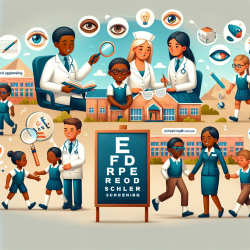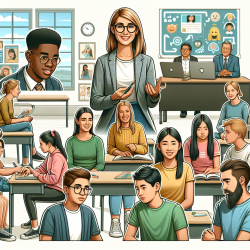Vision screenings are a critical component of school health policies, essential for early detection of visual anomalies that can impact academic performance and social development. The research article, "Vision screening as part of the school health policy in South Africa from the perspective of school health nurses," offers valuable insights into the current practices and challenges faced by school health nurses (SHNs) in South Africa.
The study highlights several key areas for improvement that practitioners can focus on to enhance the effectiveness of vision screenings:
- Training and Education: The research underscores the need for comprehensive training for SHNs. While current training is often informal and inconsistent, structured and formalized training programs can significantly improve the accuracy and efficacy of vision screenings. Training should cover not only the technical aspects of vision testing but also the interpretation of results and identification of various ocular pathologies.
- Standardized Screening Protocols: The study reveals variability in the screening criteria and methods used by SHNs. Standardizing these protocols can help reduce false positives and negatives, ensuring that children who need further evaluation are accurately identified. For example, understanding the significance of different visual acuity measurements and the appropriate use of the Snellen chart can improve screening outcomes.
- Improved Referral Systems: Effective vision screening is not just about identifying issues but also ensuring that children receive the necessary follow-up care. The research points out the challenges in the current referral systems, including delays and lack of feedback from eye care professionals. Establishing a more efficient and responsive referral network can help address these issues.
- Enhanced Communication and Coordination: The study identifies communication gaps between SHNs, schools, parents, and eye care professionals. Improving communication channels and fostering better coordination among all stakeholders can enhance the overall effectiveness of the vision screening program. This includes ensuring that parents understand the importance of vision screenings and the need for follow-up care.
- Resource Allocation: Addressing human resource constraints and providing adequate materials and financial support are crucial for the success of vision screening programs. Increasing the number of school health teams and ensuring they have the necessary equipment can alleviate some of the workload pressures on SHNs and improve the quality of screenings.
By focusing on these areas, practitioners can significantly improve the outcomes of vision screenings in schools, ultimately enhancing children's academic performance and overall well-being. The research article serves as a valuable resource for understanding the current challenges and opportunities in school vision screenings and provides a foundation for further research and development in this field.
To read the original research paper, please follow this link: Vision screening as part of the school health policy in South Africa from the perspective of school health nurses.










